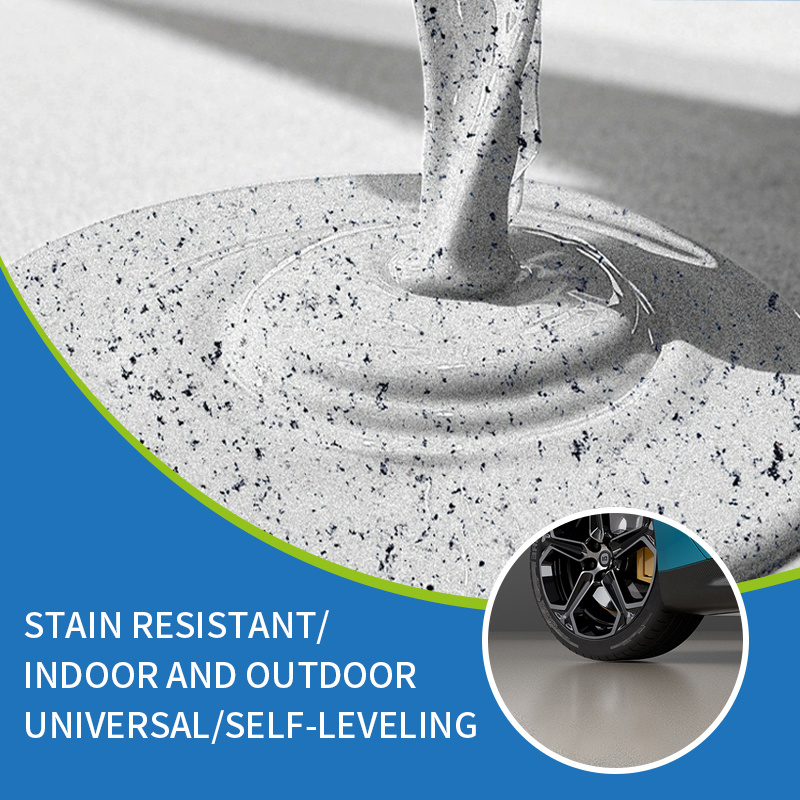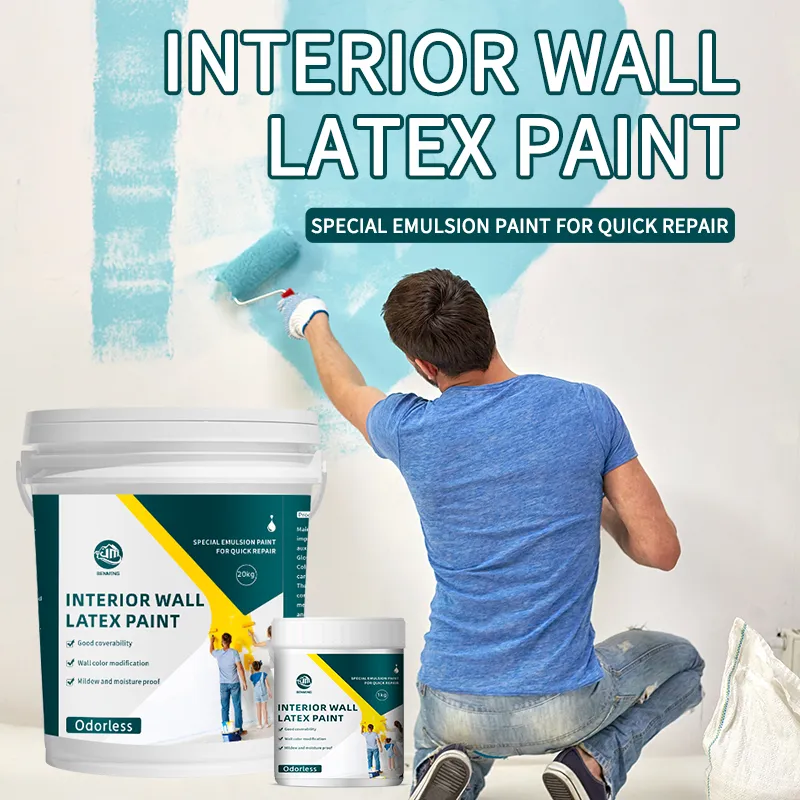The Science Behind Odorless Polyurethane Coating: What You Need to Know
Jun 29,2025
The Science Behind Odorless Polyurethane Coating: What You Need to Know
Introduction to Odorless Polyurethane Coating
Odorless polyurethane coatings have become increasingly popular in various industries, particularly in construction, automotive, and furniture manufacturing. These coatings offer an array of advantages, from enhanced durability to environmental safety. The absence of strong odors associated with traditional polyurethane solutions makes them appealing for both consumers and professionals. In this article, we will delve into the science behind these innovative coatings, exploring their composition, benefits, applications, and frequently asked questions.
Understanding Polyurethane: A Brief Overview
Polyurethane is a versatile polymer that can be formulated as either a hard or soft material. Its properties are highly adjustable, allowing it to be used in a plethora of applications, including foams, elastomers, and coatings. The basic structure of polyurethane consists of a chain of alternating urethane links, which provide flexibility, resilience, and resistance to wear and tear.
The Chemical Composition of Polyurethane
Polyurethane is synthesized through a reaction between polyols and isocyanates. This chemical process creates a diverse range of materials, each with unique properties tailored for specific applications.
- **Polyols**: These are alcohol-based compounds that contain multiple hydroxyl groups. They serve as the backbone of the polyurethane polymer.
- **Isocyanates**: These reactive monomers are crucial for forming the urethane links. Common isocyanates include toluene diisocyanate (TDI) and methylene diphenyl diisocyanate (MDI).
The ratio of polyols to isocyanates, along with the choice of additives, determines the final properties of the polyurethane coating.
What Makes Polyurethane Odorless?
Traditionally, polyurethane coatings release strong odors due to the volatile organic compounds (VOCs) present in the isocyanates and solvents used during application. However, odorless polyurethane formulations utilize special additives and advanced technology to minimize or eliminate these VOCs, resulting in a more pleasant application environment without sacrificing performance.
The Benefits of Odorless Polyurethane Coatings
The transition to odorless polyurethane coatings offers numerous benefits, making them a preferred choice for many applications. Some key advantages include:
1. Improved Air Quality
The reduction or elimination of VOCs during application contributes to better indoor air quality. This is especially important in confined spaces, such as homes or offices, where traditional coatings can lead to health concerns for occupants.
2. Enhanced User Experience
Odorless coatings provide a more pleasant working environment for applicators. Without the overwhelming smell of conventional coatings, workers can apply these products with greater comfort, leading to increased productivity.
3. Superior Durability and Performance
Despite the absence of strong odors, odorless polyurethane coatings maintain the robustness and protective qualities associated with standard polyurethane. They offer excellent adhesion, flexibility, and resistance to abrasion, chemicals, and UV light, ensuring long-lasting results.
4. Eco-Friendly Options
Many odorless polyurethane coatings are formulated with environmentally friendly materials, making them an excellent choice for eco-conscious consumers. These products not only reduce harmful emissions but also promote sustainable practices in various industries.
5. Versatile Application
Odorless polyurethane coatings can be applied to a wide range of surfaces, including wood, metal, and concrete. Their versatility makes them an ideal solution for various industries, from construction to automotive and furniture manufacturing.
Applications of Odorless Polyurethane Coatings
The versatility of odorless polyurethane coatings lends themselves to various applications across multiple industries. Here are some of the most common uses:
1. Interior Wood Finishes
Odorless polyurethane coatings are ideal for interior wood surfaces, such as furniture and cabinetry. They provide a durable finish that enhances the natural beauty of wood without the strong odors associated with traditional finishes.
2. Flooring Solutions
Many commercial and residential flooring projects utilize odorless polyurethane coatings. These coatings deliver a tough protective layer that resists scratches, stains, and wear, making them suitable for high-traffic areas.
3. Automotive Paints and Coatings
In the automotive industry, odorless polyurethane coatings are used for both exterior and interior applications. These coatings offer excellent protection against the elements while ensuring a pleasant working environment for applicators.
4. Industrial Coatings
Manufacturing facilities often require coatings that can withstand harsh conditions. Odorless polyurethane coatings provide robust protection for machinery, equipment, and surfaces without compromising air quality.
5. Marine Applications
The marine industry benefits from odorless polyurethane coatings that can protect boats and equipment from the harsh marine environment. These coatings resist water, UV rays, and corrosion, ensuring longevity and performance.
How to Apply Odorless Polyurethane Coatings
Applying odorless polyurethane coatings requires careful preparation and execution to achieve the best results. Follow these steps for optimal application:
1. Surface Preparation
Before applying any coating, ensure the surface is clean, dry, and free of contaminants. Remove any dust, grease, or old finishes to promote proper adhesion.
2. Choosing the Right Tools
Select appropriate tools for application based on the surface and the type of coating. Brushes, rollers, and sprayers are common tools used for applying polyurethane coatings.
3. Following Manufacturer Instructions
Each product comes with specific guidelines regarding application, mixing ratios, and drying times. Following the manufacturer’s instructions is crucial for achieving the desired results.
4. Applying the Coating
Apply a thin, even layer of the coating to avoid drips and runs. Multiple thin coats are generally preferred over a single thick coat for better durability and finish quality.
5. Allowing Proper Curing Time
After application, allow the coating to cure according to the manufacturer’s recommendations. Proper curing enhances adhesion and durability, ensuring a long-lasting finish.
Frequently Asked Questions (FAQs)
1. Are odorless polyurethane coatings safe for indoor use?
Yes, odorless polyurethane coatings are designed to minimize VOC emissions, making them safe for indoor applications. They improve air quality compared to traditional coatings.
2. How long does it take for odorless polyurethane coatings to dry?
Drying times can vary based on the specific product and environmental conditions. Generally, most odorless polyurethane coatings are touch-dry within a few hours, but full curing may take longer.
3. Can I use odorless polyurethane coatings on outdoor surfaces?
While many odorless polyurethane coatings are suitable for outdoor use, it is essential to check the product specifications. Some formulations offer UV resistance and durability for outdoor applications.
4. How do I clean up after using odorless polyurethane coatings?
Clean tools and spills with warm, soapy water, or follow the manufacturer’s guidelines for specific cleaning products. Always dispose of any waste materials according to local regulations.
5. Can I paint over odorless polyurethane coatings?
Yes, you can paint over odorless polyurethane coatings, but ensure the surface is sufficiently cured and follow proper preparation guidelines. Lightly sanding the surface will enhance paint adhesion.
Conclusion
Odorless polyurethane coatings represent a significant advancement in the world of protective finishes. Their ability to provide excellent durability, enhanced air quality, and eco-friendly characteristics make them an ideal choice for various applications. Understanding the science behind these coatings allows consumers and professionals to make informed decisions that benefit both projects and the environment. With the continued evolution of coating technology, odorless polyurethane is poised to play a vital role in industries ranging from construction to automotive, satisfying the growing demand for high-performance, safe, and sustainable solutions.
Keyword:
Latest News







